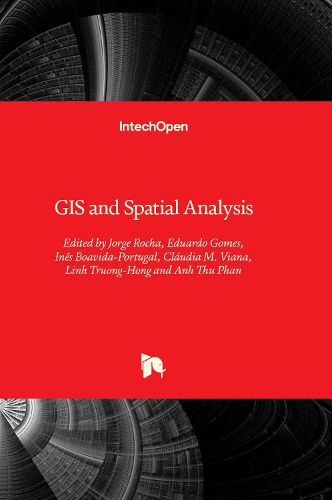Readings Newsletter
Become a Readings Member to make your shopping experience even easier.
Sign in or sign up for free!
You’re not far away from qualifying for FREE standard shipping within Australia
You’ve qualified for FREE standard shipping within Australia
The cart is loading…






This title is printed to order. This book may have been self-published. If so, we cannot guarantee the quality of the content. In the main most books will have gone through the editing process however some may not. We therefore suggest that you be aware of this before ordering this book. If in doubt check either the author or publisher’s details as we are unable to accept any returns unless they are faulty. Please contact us if you have any questions.
The objective of spatial analysis techniques is to describe the patterns existing in spatial data and to establish, preferably quantitatively, the relationships between different geographic variables. The notion of spatial analysis in a Geographic Information Systems (GIS) environment encompasses the idea of integrating spatial data and alphanumeric attributes and translating it into a series of functions related to selection and data search, on the one hand, and with modeling, on the other. There have been substantial advances in spatial analysis techniques in GIS, mainly in the form of more faithfully apprehending the relationships inherent to the geographic phenomenon, something that was proven impossible to do with non-spatial techniques. Nowadays, spatial analysis involves a set of techniques used to analyze and model variables with distribution in space and/or time. The new era of spatial analysis must also consider the possibilities of integrating artificial intelligence in simulation (geosimulation) processes in computerized environments (geocomputation) in close relationship with models developed in real situations. GIS have emerged as useful tools in geographic modeling processes, helping to answer questions about the time variability of the landscape structure, study the behavior of fire, predict areas of urban expansion, analyze propagation phenomena, model animal movement and behavior, and determine periods and areas of high risk of flooding, among other phenomena. and #60;i and #62;GIS and Spatial Analysis and #60;/i and #62; is a critical book that provides different methodologies that combine the potential data (including Big Data) analysis with GIS applications. It gives readers a comprehensive overview of the current state-of-the-art methods of spatial analysis, focusing both on the new philosophical and theoretical foundations for spatial analysis and on a flexible framework for analysis in the real world, for problems such as complexity and uncertainty.
$9.00 standard shipping within Australia
FREE standard shipping within Australia for orders over $100.00
Express & International shipping calculated at checkout
Stock availability can be subject to change without notice. We recommend calling the shop or contacting our online team to check availability of low stock items. Please see our Shopping Online page for more details.
This title is printed to order. This book may have been self-published. If so, we cannot guarantee the quality of the content. In the main most books will have gone through the editing process however some may not. We therefore suggest that you be aware of this before ordering this book. If in doubt check either the author or publisher’s details as we are unable to accept any returns unless they are faulty. Please contact us if you have any questions.
The objective of spatial analysis techniques is to describe the patterns existing in spatial data and to establish, preferably quantitatively, the relationships between different geographic variables. The notion of spatial analysis in a Geographic Information Systems (GIS) environment encompasses the idea of integrating spatial data and alphanumeric attributes and translating it into a series of functions related to selection and data search, on the one hand, and with modeling, on the other. There have been substantial advances in spatial analysis techniques in GIS, mainly in the form of more faithfully apprehending the relationships inherent to the geographic phenomenon, something that was proven impossible to do with non-spatial techniques. Nowadays, spatial analysis involves a set of techniques used to analyze and model variables with distribution in space and/or time. The new era of spatial analysis must also consider the possibilities of integrating artificial intelligence in simulation (geosimulation) processes in computerized environments (geocomputation) in close relationship with models developed in real situations. GIS have emerged as useful tools in geographic modeling processes, helping to answer questions about the time variability of the landscape structure, study the behavior of fire, predict areas of urban expansion, analyze propagation phenomena, model animal movement and behavior, and determine periods and areas of high risk of flooding, among other phenomena. and #60;i and #62;GIS and Spatial Analysis and #60;/i and #62; is a critical book that provides different methodologies that combine the potential data (including Big Data) analysis with GIS applications. It gives readers a comprehensive overview of the current state-of-the-art methods of spatial analysis, focusing both on the new philosophical and theoretical foundations for spatial analysis and on a flexible framework for analysis in the real world, for problems such as complexity and uncertainty.